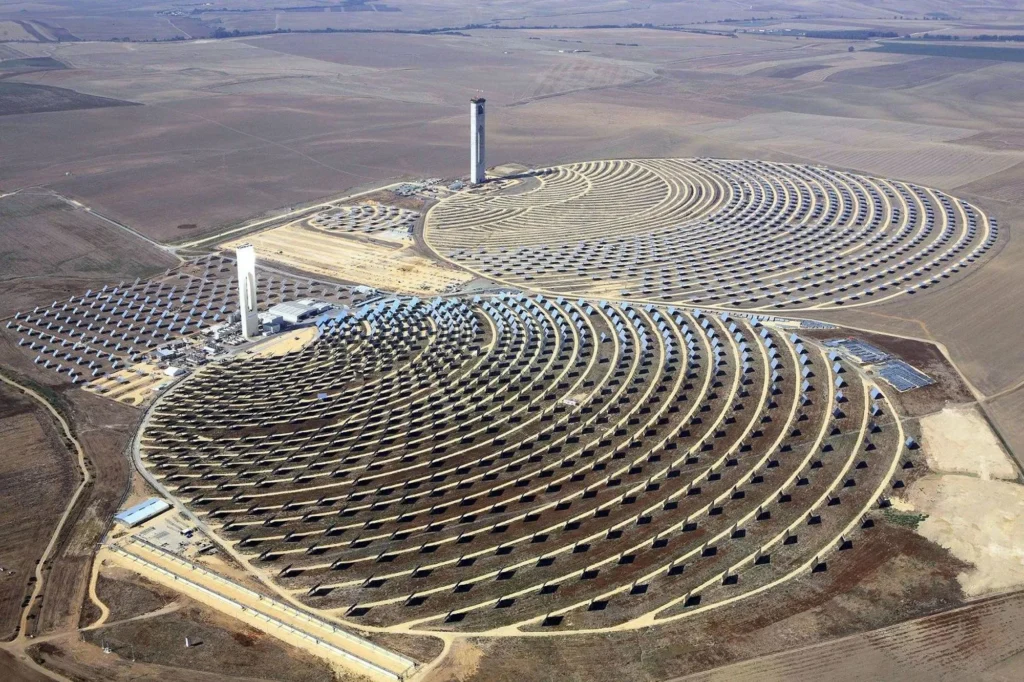Doha – A new report by Solarpower Europe, which is supported by the Global Solar Council and the Morocco Cluster ENR, defines Kühne projections for the Morocco’s solar energy capacity. The results show massive opportunities in the green transition of the country – but also from important hurdles that could slow the progress.
The extensive analysis takes place when Morocco drives a target of at least 52% of renewable energies in its installed electricity capacity by 2030.
Accordingly The report, Morocco’s extraordinary solar resources, clearly positions it for the development of solar energy, with global horizontal radiation (GHI) reaching up to 2,264 kWh/m² per year in the southern regions.
The country has currently installed overall Power capacity From 11,987 MW with thermal sources, which make up 6,676 MW, while the solar capacity is 831 MW and includes both photovoltaic and concentrated solar zero systems.
“Morocco has developed as an important player in the field of renewable energies, especially in solar,” says the report, which is the fifteenth in a series of global market analyzes from Solarpower Europe.
The study, which was developed through extensive consultations with important stakeholders such as representatives of the public and private sector as well as international organizations, offers detailed insights into the market dynamics and regulatory framework conditions that form the solar sector of Morocco.
Despite Morocco’s goals, progress remains uneven
According to the latest data from one, cited in the report, the cumulative photovoltaic capacity of Morocco reached 0.32 GW in 2023.
According to the moderate scenario projections from Solarpower Europe, this capacity is expected to be “a steady increase of 2.27 GW cumulative capacity until 2027 and a highlight of 2.97 GW in 2028.” The optimistic high scenario of the report indicates that the capacity could possibly increase to 4.35 GW by 2028.
“Morocco is a pioneer of Solar in Africa, and we predict the addition of 2.2 GW more by 2028,” said Sonia Dunlop, General Director of the Global Solar Council.
“With a solid regulatory framework, long -term ambition and the growing electricity requirement, which is driven by the National Green hydrogen strategy, the sun costs will continue to decrease and new investments will open Occasions“, He said.
However, the report states that “despite the goals of Morocco for renewable energies, progress in achieving these goals was uneven.
This moderate development is attributed to several factors, including “a higher focus on CSP, delays in the development of PV projects and the challenges in lattice integration”.
The infrastructure must develop with growing capacity
The report emphasizes the critical infrastructure requirement as Morocco extended His solar capacity. “In particular, strengthening the north-south network connections is of the greatest importance,” says the document.
It is also pointed out that “solar energy in the southern regions of Morocco, which have high sunlight is mostly generated, are most important in the north.”
An excellent example of the large-scale solar development in Morocco is the Noor Ouarzazate complex, one of the world’s largest concentrated solar power systems with an installed capacity of 510 MW and an additional 72 MW for Solar PV.
The completion of the project in four phases between 2016 and 2018 shows the commitment Morocco for the important development of the solar infrastructure.
One, the national network operator of Morocco, is already taking measures to satisfy this challenge. The report describes plans for “A 3 GW VHV network between OUED LEKRA (near Dakhla in southern Morocco) and Médiouna (in the Casablanca region at the center of the country).”
This project is implemented in two phases: “The first with a connection of 1,500 MW capacity by 2026 and a second with an additional 1,500 MW by 2028.”
Clear regulatory framework required
The report indicates several important regulatory developments, including Law 82-21 (2023), which “set new requirements for the self-development of electricity based on the capacity of installation and its connection to the network”.
As part of this framework, “installations with a capacity of 5 MW or more must obtain the prior approval from the responsible network operator”.
In addition, Morocco has recently implemented significant price reforms. “According to the 2024 Finance Act, electricity prices in 2024 undertook a value creation tax (VAT) of 16%. The VAT -MWST interest rate in connection with 2025 is 18%, which will be converged to 20%in 2026,” the report said.
It adds that “the electricity from renewable energy sources (res) had a speed of 12% in 2024, which is reduced to 10% from 2025 from 2025.”
The report describes considerable financial incentives to attract investments, including “a bonus of 5% of the investments” for projects worth more than MAD 50 million (EUR 4.7 million) that create at least 50 jobs.
The latest reforms of electricity prices have further improved the attractiveness of the investment, with Anre calculations showing “an average reduction of 38% of tariffs compared to 2023”.
Fatima Zahra El Khalifa, General Director of Cluster ENR, is quoted in the report: “Thanks to its enormous sun potential, Morocco positions itself as the key player in the renewable Energy sector. “”
“With strategic investments in the solar infrastructure, Morocco is good to exploit his full potential, accelerate its energy transition and promote long -term sustainable growth,” she continued.
The report concludes with specific recommendations and emphasizes that “Morocco should continue the path of electricity liberalization of the electricity market in order to attract more private investments and to maintain the previous efforts of renewable energies.”





